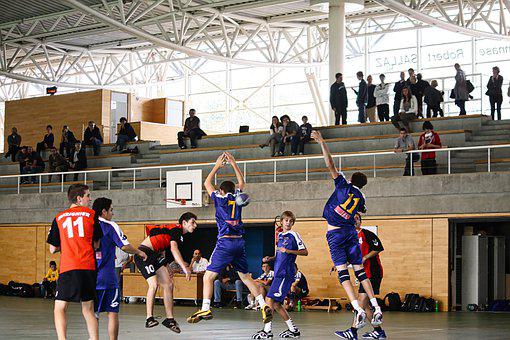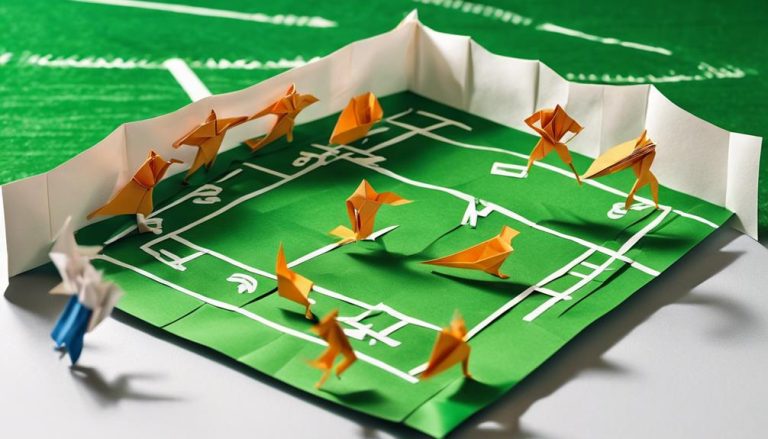General Rules of Footbag
You're about to immerse yourself in the world of footbag, a fast-paced, high-energy sport that requires skill, strategy, and athleticism. To get started, you'll need to understand the basic rules. The court is 44 feet long and 20 feet wide, with a net that's 5 feet 1 inch high in the center. Points are scored when your opponent fails to return the footbag or commits a fault. You'll need to master serves, rallies, and strategy to outmaneuver your opponent. As you start to learn the ins and outs of footbag, you'll discover the intricacies of fouls, player conduct, and game flow – and that's just the beginning.
Court Dimensions and Equipment
What are the ideal court dimensions and equipment you'll need to play footbag? To get started, you'll need a rectangular court with a length of 44 feet and a width of 20 feet. The ideal net height is 5 feet 1 inch at the center, sloping to 4 feet 7 inches at the sidelines. This setup guarantees a challenging yet enjoyable game.
When it comes to surface materials, footbag courts can be set up on various surfaces, including wood, synthetic floors, or even outdoor surfaces like asphalt or concrete. The key is to make sure the surface is flat, smooth, and free from obstacles. A smooth surface allows for better ball control and movement.
Gameplay and Scoring Basics
Now that you've set up your court, you're ready to start playing – and that means understanding the basics of gameplay and scoring. As you step onto the court, you'll want to develop a game strategy that suits your playing style.
Here are the essentials to get you started:
- Points are scored when your opponent fails to return the footbag to the other side of the court, or when they commit a fault.
- Rallies are key to winning points. A rally is a sequence of hits where both players successfully return the footbag.
- Keep track of points using a point system, where a game is typically played to 11 points, with a two-point advantage (e.g., 11-9).
Your goal is to outmaneuver your opponent, using a combination of speed, agility, and strategy to outscore them. As you gain experience, you'll refine your game strategy to maximize your chances of winning. Remember, the basics of gameplay and scoring are the foundation of a fun and competitive game of footbag.
Serving and Rallies Explained
As you prepare to face off against your opponent, mastering the art of serving and rallying is essential to gaining a competitive edge in footbag. A well-executed serve can put pressure on your opponent from the start, while a solid return strategy can turn the tables in your favor.
To develop a strong serving game, it's important to experiment with different spin techniques. By varying the spin, speed, and direction of your serves, you can keep your opponent guessing and off-balance.
Here's a breakdown of common spin techniques and their effects:
| Spin Technique | Description | Effect on Opponent |
|---|---|---|
| Topspin | Forward-spinning serve | Forces opponent to hit upwards, creating an opportunity for a strong return |
| Backspin | Backward-spinning serve | Causes the footbag to dip, making it difficult for the opponent to return |
| Sidespin | Serve with spin that curves | Unpredictable trajectory, making it hard for the opponent to anticipate |
Fouls and Penalty Enforcement
In a competitive footbag match, you'll likely encounter fouls, which can greatly impact the game's outcome, and it's essential to understand the rules governing penalty enforcement. Fouls can range from minor infringements to more severe offenses, and the intensity of the foul will dictate the severity of the penalty.
Here are some key points to keep in mind:
- Minor fouls: These include incidental contact, minor delays, or brief interruptions to the game. Penalties for minor fouls might include a warning or a point deduction.
- Moderate fouls: These include intentional interference, obstruction, or deliberate attempts to disrupt the opponent's play. Penalties for moderate fouls might include a point deduction or a brief suspension.
- Major fouls: These include violent conduct, intentional harm, or deliberate attempts to injure an opponent. Penalties for major fouls can result in a game forfeiture or even tournament disqualification.
Player Conduct and Etiquette
Your conduct on and off the footbag court greatly influences the game's atmosphere and your relationships with opponents, teammates, and officials. As a player, you're expected to maintain a high level of sportsmanship, respect, and integrity throughout the game. This includes respecting your opponents' skills, acknowledging their good plays, and congratulating them on their wins.
You're also expected to communicate respectfully with your teammates, opponents, and officials. This means using respectful language, avoiding arguments, and refraining from criticizing or intimidating others. Remember, respectful communication is key to a positive and enjoyable game environment.
In terms of sportsmanship expectations, you're expected to play fairly, follow the rules, and avoid unsportsmanlike behavior. This includes avoiding intentional fouls, not disputing calls unfairly, and not arguing with officials' decisions. By conducting yourself in a respectful and sportsmanlike manner, you'll contribute to a positive and enjoyable game environment for everyone involved.
Game Flow and Dead Ball Rules
During gameplay, you'll encounter dead ball situations, which occur when the footbag lands out of bounds, a foul is committed, or a timeout is called, and understanding the rules governing these situations is crucial to maintaining a smooth game flow.
In a dead ball situation, the game is stopped, and a restart protocol is initiated. This protocol guarantees a fair and efficient restart, minimizing stoppage timing. Here are three key points to remember:
- Identify the cause: Determine the reason for the dead ball situation, as this will dictate the restart protocol.
- Apply the restart protocol: Follow the specific rules for restarting play, such as a kick-in, throw-in, or serve.
- Resume play promptly: Ensure a swift restart to maintain the game's momentum and minimize interruptions.
Substitutions and Team Play
You'll need to manage your team's players efficiently, as substitutions can greatly impact the game's outcome. In footbag, substitutions can occur during designated intervals, such as between points or during timeouts. Understanding the different player roles and team dynamics is crucial for making strategic substitutions.
| Player Role | Description |
|---|---|
| Setter | Responsible for setting the footbag for the attacker. |
| Attacker | Tries to score by kicking the footbag. |
| Blocker | Tries to block the attacker's kick. |
When substituting, consider the strengths and weaknesses of each player and the game's current situation. For instance, if your team is struggling to block an opponent's attacker, you may want to substitute in a player with strong blocking skills. Effective substitutions can have a significant impact on the game's momentum and outcome. By understanding player roles and team dynamics, you can make informed decisions to optimize your team's performance.
Frequently Asked Questions
Can I Wear Jewelry While Playing Footbag?
When playing footbag, can you wear jewelry? Honestly, it's not recommended, as loose accessories can be a safety hazard or get damaged. But, if it's a meaningful personal expression, consider securing it tightly or choosing a safe, breakaway design.
Do I Need to Warm up Before a Match?
Before a match, you should always warm up to prevent injuries and increase flexibility. Incorporate exercises that target your legs, hips, and ankles, and don't forget to stretch afterwards to improve your overall performance.
Can I Play With a Damaged Footbag?
"An ounce of prevention is worth a pound of cure." Before playing, you should inspect your footbag for damage. If it's compromised, don't risk injury; a damaged bag can burst, affecting your game and safety – prioritize footbag durability and replace it if necessary.
Are Players Allowed to Consume Food During a Match?
You're wondering if you can grab a snack during a match. The answer is, it's not explicitly forbidden, but be mindful of snack breaks and meal timing, as delays can disrupt the game flow and impact your performance.
Can I Ask the Referee for Clarification on a Rule?
Did you know that 75% of disputes in sports arise from rule misinterpretations? You can ask the referee for clarification on a rule, as they have the discretion to interpret rules, ensuring a fair game, so don't hesitate to seek clarity.






